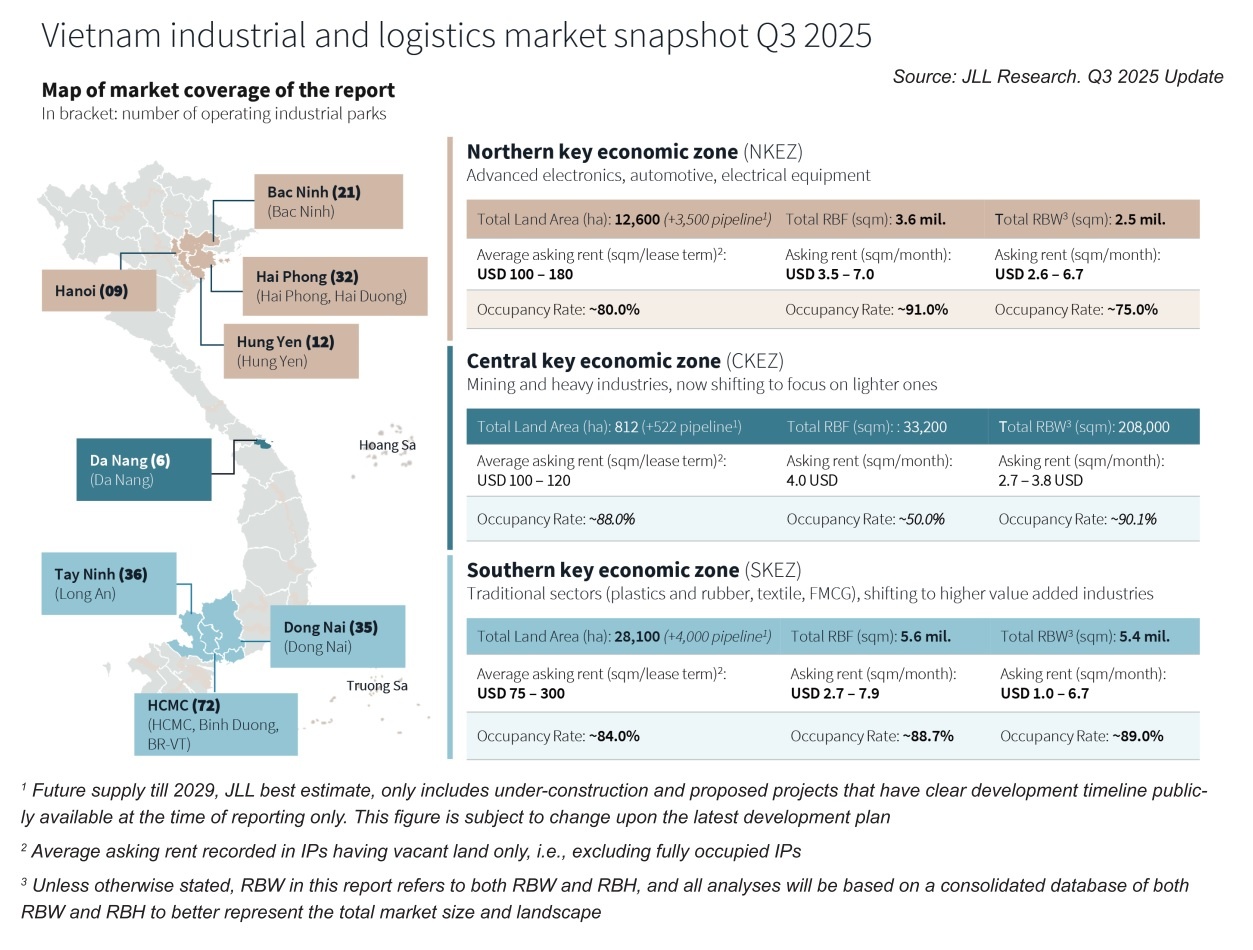 |
| Trang Le, Country head, JLL Vietnam |
This trend has ignited a vibrant race among Southeast Asian nations to become the new manufacturing hub. Vietnam has proven itself a rising star, nearly doubling its market share from 9.7 per cent in 2014 to 18.1 per cent in 2024.
The data also shows that Vietnam’s competitor, Indonesia, has surged ahead, increasing its market share from 8.7 per cent to 22.8 per cent, surpassing even China in 2024.
This shift is driven by the China+1 strategy of multinational corporations, aiming to diversify markets and mitigate the risks of over-reliance on a single market. Vietnam has capitalised on this opportunity, significantly increasing its share of US imports. Vietnam’s share of the US trade deficit increased from 5 per cent in 2018 to 10 per cent in 2024.
Beyond external factors, internal drivers are also crucial to the development of industrial real estate. Its central location in Southeast Asia allows Vietnam to leverage the region’s dynamic growth, thereby boosting its economy and development process.
Vietnam’s position is further strengthened by an increasingly open policy environment. The signing of numerous free trade agreements has opened access to a massive market of 55 countries, almost 4.9 billion consumers, and approximately 80 per cent of global GDP.
New US trade policies, despite presenting challenges, are also seen as an opportunity for Vietnam to increase its local content rate and attract supply chains with real value-added.
To prepare for the future, the Vietnamese government is continuously boosting infrastructure investment, with a target of dedicating up to 7 per cent of GDP to this sector by the end of 2025. A series of key national projects are being implemented and will soon become operational, helping to enhance connectivity and optimise the supply chain.
According to JLL data as of Q3, Vietnam’s industrial real estate market continues to maintain stable development momentum, with high occupancy rates in key economic regions.
 |
There are several main drivers for the development of industrial real estate in the new cycle, where the market is not only expanding in scale but also growing in depth and value. The continuous flow of foreign investment into manufacturing creates direct demand for industrial land and factories; Vietnam is emerging as a preferred alternative manufacturing destination, driven by competitive tariff advantages; large-scale public investment commitments in transportation infrastructure are improving connectivity and reducing logistics costs; and legal reforms are enhancing transparency and unlocking resources, thereby strengthening investor confidence.
On top of that, the boom in e-commerce is creating unprecedented demand for modern warehouses and last-mile logistics systems; and market maturation also is driving demand for specialised and higher value-added assets, such as cold storage facilities and data centres.
The future of industrial real estate is not just about building infrastructure, but about integrating technology for more efficient and safer operations. Drawing inspiration from the development of Jurong Island, Singapore, key technologies are being applied.
These include the Internet of Things and digital twins, with thousands of sensors installed to collect real-time data in industrial areas; predictive maintenance using machine learning to analyse data and predict potential failures weeks in advance; and tech that enhances worker safety, for example, through sensor systems that detect gas leaks and wearable devices that monitor workers’ health.
Technology helps industrial parks operate more efficiently, safely, and cost-effectively. This is considered the model that modern industrial areas in Vietnam will aspire to. Green real estate is no longer an option but has become a mandatory factor for growth. This impetus comes from two directions: decisive government policies and the increasingly stringent environment, social, governance requirements from international tenants.
Building green-certified factories and warehouses not only helps protect the environment, but is also a crucial competitive advantage for attracting high-quality investors and tenants in the future. Vietnam is gradually advancing to a new development stage, focusing on manufacturing products with medium/high value-added content and reducing the proportion of basic industries.
Despite all this, Vietnam faces several major challenges that diminish its overall competitiveness compared to regional rivals.
Its labour productivity is among the lowest in the region, which is eroding the advantage of cheap labour costs, while industrial land prices continue to rise. The inconsistent quality of infrastructure and congestion on roads connecting to seaports have also become a major hindrance, increasing transportation costs and time.
Furthermore, there is a lack of transparency in the business environment. Vietnam is still classified in the “low transparency” group. Complex legal procedures, planning, and perceptions of corruption are significant barriers for international investors.
Finally, dependence on external supply chains still exists, mainly from China. A low localisation rate makes the manufacturing sector vulnerable to fluctuations in the raw materials market and reduces the value-added generated domestically.
 |





